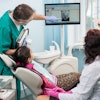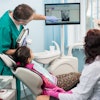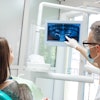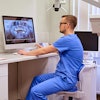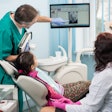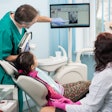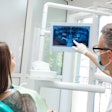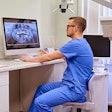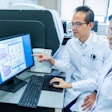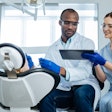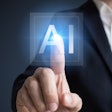
Artificial intelligence (AI) in medicine is transforming how medical professionals and patients interact, and the same shift is happening in dentistry. From the earliest days of the 20th century, dentistry has seen a variety of changes and improvements in patient care, including fluoride, high-speed handpieces, implants and digital dentistry. But these changes have often occurred slowly. Now with AI, the waves of change are coming faster.
As mentioned in part one in this three-part series, AI utilizes computers, data, and algorithms. While all dental software systems contain data, the data are frequently in silos. In other words, the data are not connected, so relevant patient data are not shared across your software programs. Fragmented patient data do not promote quality care and could negatively impact the outcome of care.
AI is helping consolidate the silos and make the data user-friendly. We know that technology in dentistry improves patient care, along with comfort and education, while increasing practitioner efficiency. From areas such as patient engagement, office administration, and marketing and practice acquisition, the data housed in various technology locations can easily be parsed and interpreted with AI. Patients even have basic AI in their smart toothbrushes to help them maintain their home care!
When evaluating any new product or technology for your practice, the return on investment (ROI) must be considered. The basic ROI premise of AI in dentistry is to have minimal amounts of false positives/false negatives (FP/FN).
A broad range of products newly available, thanks to AI
The first interaction a patient typically has with a practice is by phone (yes, a website and online portals are important, but the first human interaction a patient has is by phone). Team members must be well-versed in handling an incoming call, whether it's from a new or existing patient. Many patients who wish to ask technical questions are put on hold or transferred to a voicemail loop that may not be conducive to effective communication or scheduling.
Utilizing AI-enhanced patient-tracking software allows practices to review marketing analytics, answer frequently asked questions, and determine call metrics. In the practice metric world, there are a number of AI products that allow teams and practices to better understand patients' perceptions of the practice as well as practice key performance indicators.
Since the pandemic, teledentistry has become an important part of today’s dental practice. Pre-pandemic teledentistry was considered primarily an addition to rural practices, but today, it can be used in a variety of ways regardless of the practice's setting. One area where there has been a significant increase in teledentistry is with clear aligner procedures. Practices can monitor patients virtually using a variety of devices, which save the patient and practice time and money.
Statistics reveal that many patients do not understand periodontal disease despite having an annual periodontal examination. Although there has been an increase in understanding since the pandemic, patients still do not fully comprehend the oral-systemic connection.
Time constraints during the hygiene and dental evaluation process may limit the amount of information that can be obtained from and shared with the patient. Third-party payers often require information that may not be obtained during a time-constrained appointment.
This is one area where AI can help both patients and team members. Using AI voice-activated periodontal charting, the information that is needed to educate patients and comply with requirements can be easily obtained. AI voice-activated charting is similar to what we use every day when we talk to Siri, Alexa, or Bixby.
In addition to helping patients understand periodontal disease with AI voice-activated periodontal charting, AI advancements in imaging have made patient education much easier, thereby increasing patient case acceptance.
Gone are the days of looking at grainy black-and-white images and trying to explain caries, calculus, periodontal disease, or a periapical abscess. Technology using AI highlights areas of concerns for the clinician to evaluate. Patients often trust technology more than clinicians; thus having AI enhance an image to demonstrate disease goes a long way toward increasing patient case acceptance.
With imaging however, the FP/FN quandry becomes more important. Clinicians must be astute to determine if there is a true issue or if a FP/FN is present.
Yet, AI used in imaging showcases the best of AI, because it is consistent, accurate, unbiased, and fast. It can be especially useful in multilocation, multiclinician practices, where treatment consistency and calibration are important across locations. Since imaging falls under the diagnostic category for U.S. Food and Drug Administration (FDA) purposes, any AI product must be cleared by the FDA, according to the software as a medical device standards for what is being diagnosed.
Below are other areas where AI in dentistry is helpful:
- Implant robotic surgeries
- Smile design and mock-ups
- Cracked tooth evaluation
- Prep assessments, designs, and prosthesis
- Chatbots and robots that engage patients
- Patient health analytics and saliva testing
- Dental/dental hygiene education
- Third-party payer review processes
AI is definitely here to stay in dentistry and will continue to evolve. Part three of this series will review compliance concerns surrounding AI in dentistry.
Linda Harvey, MS, RDH, began her career in healthcare as a dental hygienist. Since that time, she’s become a nationally recognized dental risk management and corporate compliance expert. Linda is the founder of the Dental Compliance Institute, an exclusive compliance membership group for dental service organizations and private practices. Harvey has been recognized as a distinguished fellow by the American Society for Healthcare Risk Management.
Ann-Marie C. DePalma, CDA, RDH, MEd, is a graduate of the Forsyth School for Dental Hygienists, Northeastern University, and the University of Massachusetts Boston. She is a fellow of the Association of Dental Implant Auxiliaries, a fellow of the American Academy of Dental Hygiene, a continuous member and fellow of the American Dental Hygienists’ Association as well as a lifetime member of the American Association of Dental Office Management. She is the 2017 Esther Wilkins Distinguished Alumni of Forsyth Award recipient.
The comments and observations expressed herein do not necessarily reflect the opinions of DrBicuspid.com, nor should they be construed as an endorsement or admonishment of any particular idea, vendor, or organization.
